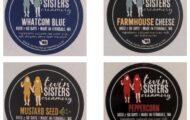The Food and Drug Administration (FDA) has established a docket on the Federal Register asking for input on allergen threshold levels. The law requires food and beverage facilities to declare the presence of eight major food allergens on their package labels. They are: eggs, tree nuts, peanuts, soybeans, wheat, milk, fish, and shellfish.
 The government would like to have clearly defined thresholds to give corporations levels to achieve, plus “defined levels for enforcement.” This would help the FDA determine corrective action when foods are contaminated with allergens by mistake, better respond when allergens are found in foods, and evaluate petitions for exemptions from the allergen labeling laws.
The government would like to have clearly defined thresholds to give corporations levels to achieve, plus “defined levels for enforcement.” This would help the FDA determine corrective action when foods are contaminated with allergens by mistake, better respond when allergens are found in foods, and evaluate petitions for exemptions from the allergen labeling laws.
Food allergies are immune-mediated sensitivities to foods that can be life-threatening. There are no cures for food allergies, so consumers must avoid that food. Food labels provide valuable information about the contents of the product. The Food Allergen Labeling and Consumer Protection Act of 2004 (FALCPA) amended the FD&C Act to define the term “major food allergen”. The Act also declared that foods regulated under this law are declared “misbranded” unless they declare the presence of the allergen. The label must state the common or usual name of that ingredient.
Cross-contamination is a real threat in the world of food allergies. Most can be avoided with good controls in the production environment, such as establishing traffic patterns that minimize the potential of transfer of an allergen from one product to another. But regulatory thresholds have not been established for food allergens.
A threshold is the “maximum amount of an allergenic food that can be tolerated without producing any adverse reaction,” according to the University of Nebraska at Lincoln Food Allergy Research and Resource Program. Those levels are called no observed adverse effect levels, or NOAELs. Most people do not know their individual threshold level, but they can be determined by a rigorous test conducted at an allergy clinic. The test must be a double-blind, placebo-controlled oral food challenge.
Population thresholds are more difficult to identify. A group of people with that allergy must be surveyed to find the threshold. While a lot of variation occurs in individual threshold dose, experts say that anyone allergic to a substance has a threshold level. Food manufacturers are careful to label their foods that may contain allergens to the point of saying “may contain allergens”, which reduces consumer choice when it may not be necessary.
You can comment on the proposal through February 7, 2013. Just click on the link and add your opinion.




